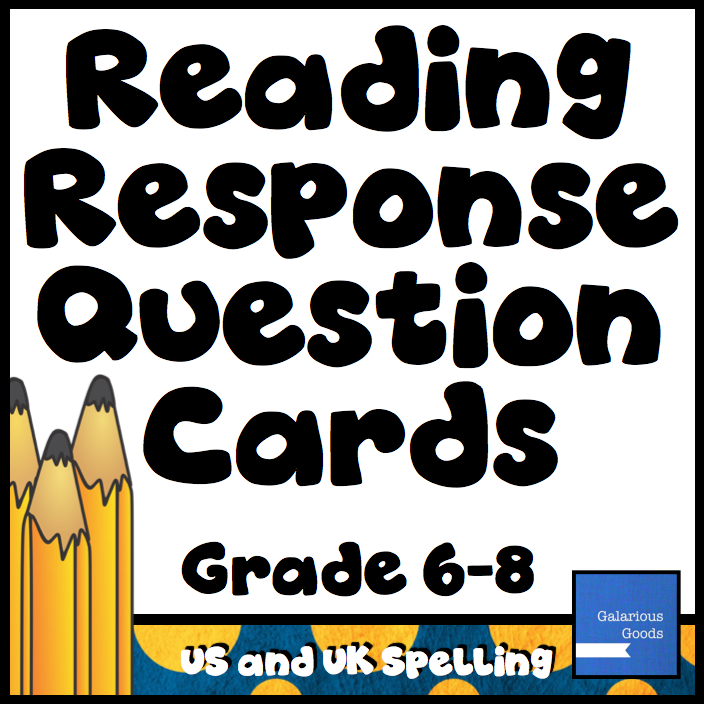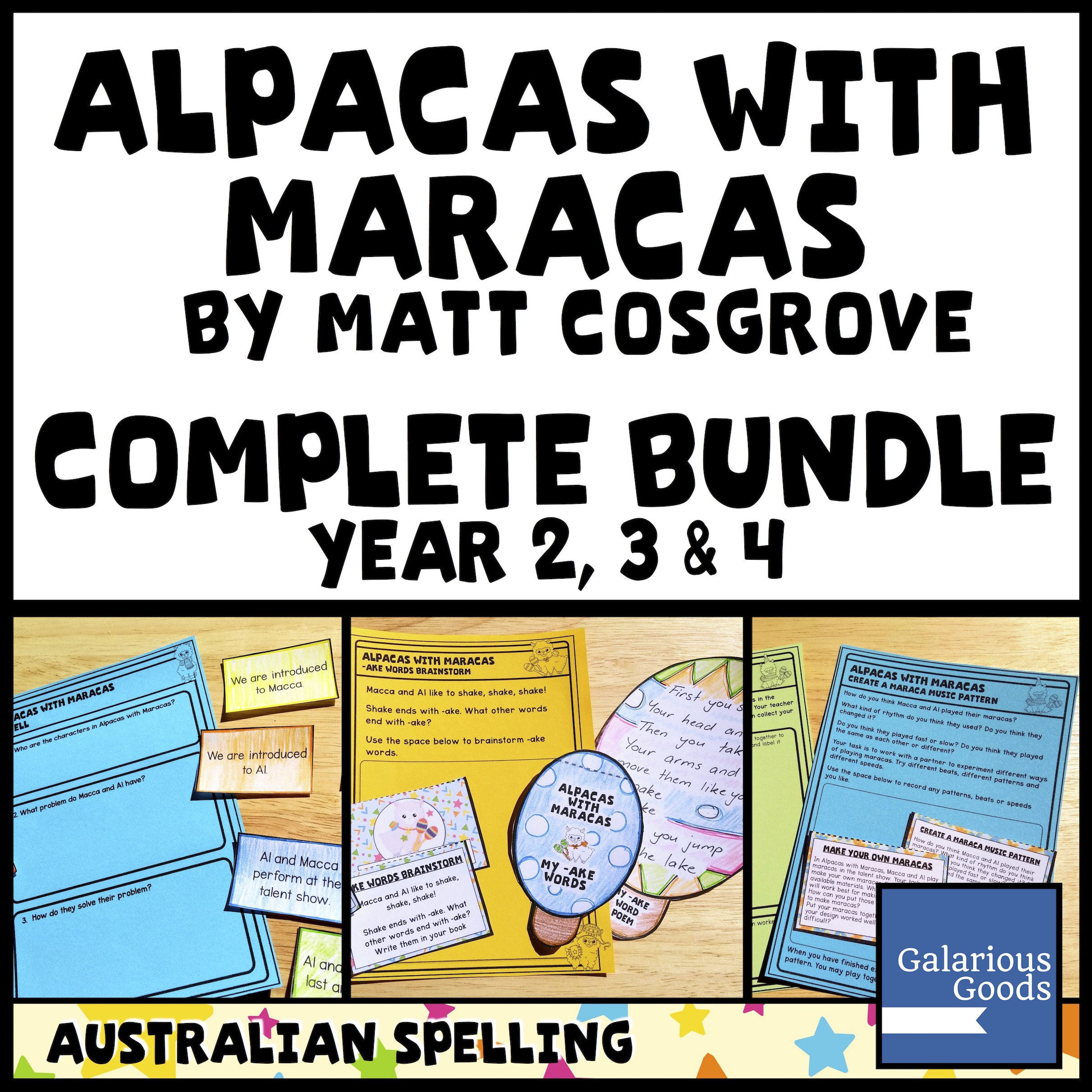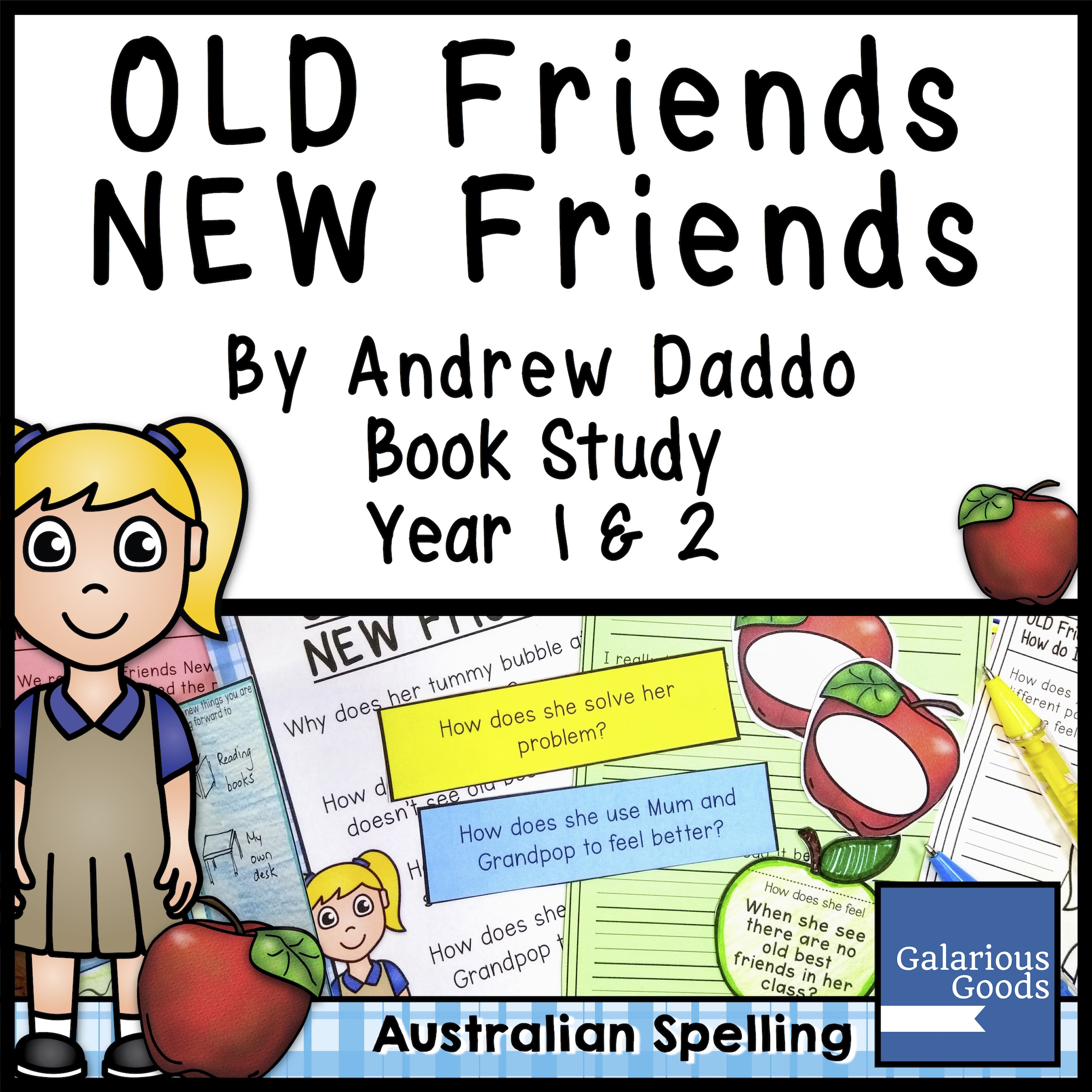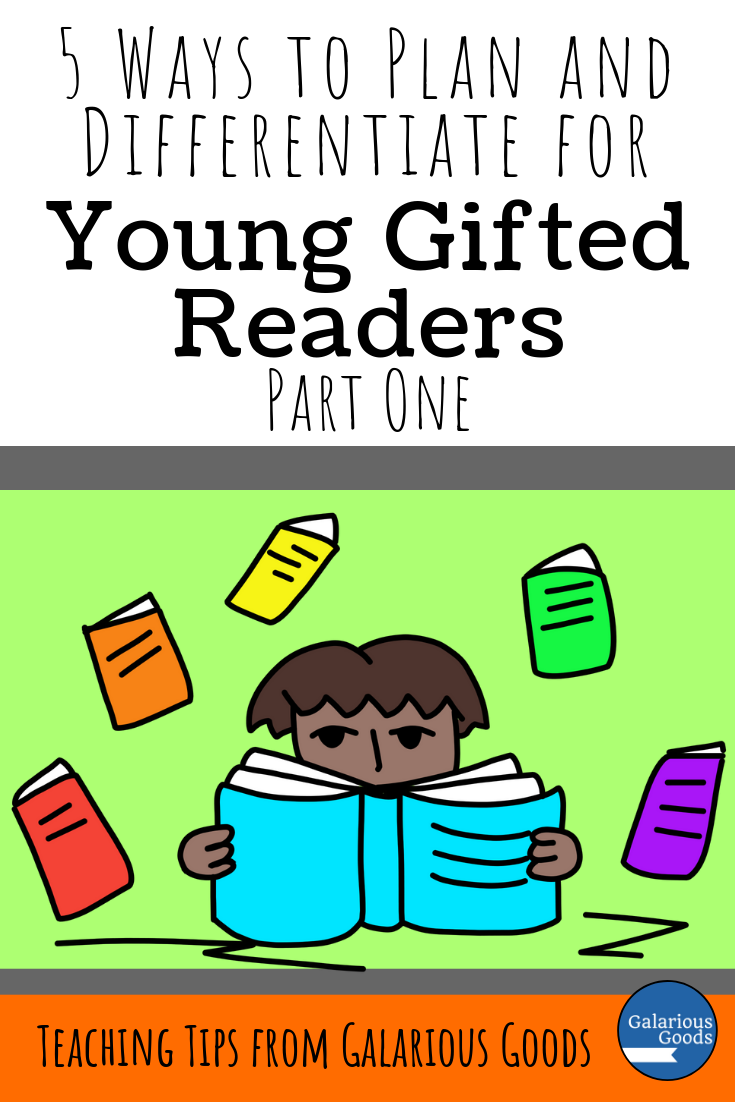5 Ways to Plan and Differentiate for Young Gifted Readers: Part Two
/In the first part of this two-part post, I talked about the importance of getting good information about the gifted readers in your class and about providing a wide range of different types of texts for those students to read. But how else can you differentiate for gifted readers in a busy classroom?
Note: While this blog post is aimed at teachers in Kindy/Prep/Reception, Grade 1 and Grade 2, many of the ideas are adaptable or applicable to older grades as well.
3. Expand Their Vocabulary
Like background knowledge, vocabulary is something you develop with more time, more reading, more conversation, more exposure to different experiences and . . . well, more time. Asking 5, 6 or 7 year olds to automatically have the same vocabulary as older students is a tall ask.
While many of these young gifted readers have wide and varied vocabularies, it’s very possible that they have gaps in their vocabulary knowledge or that they are missing vocabulary understanding when it comes to particular subjects. While they can continue to grow their vocabulary through reading, it’s important to provide opportunities for students to see vocabulary as something you can work on, something to strive to improve at.
Parents of gifted readers will tell you that it’s incredibly frustrating to see sight words or high frequency words come home which are well below the level of their children. These are often accompanied with instructions to ‘learn them’ to ‘laminate the cards’ or to ‘check Pinterest for fun activities’. While these are excellent ideas for students who are learning these words, they leave parents of gifted readers wondering whether their child is being catered for at all, and what possible alternatives there are to sight word activities.
Offering a vocabulary list instead of sight word list is an easy way to differentiate this kind of homework (or school work) for gifted students. Like sight words, you can offer a few easy activities - look up the word, write a sentence with the word, see if you can spot the word in a book, draw the word - for students to complete in the classroom or at home. You can find or suggest additional ideas through Pinterest or extend students with ideas like using folding resources.
You can also help young gifted readers to extend their reading by teaching them how to look up word definitions in a dictionary. Students can develop the skills of finding words, looking at multiple definitions and (at times) looking up more words so they really understand the definition. This is a skill they’ll be able to use for years to come!
How do you make it work in a busy classroom?
You can create or find vocabulary templates (or teach students to draw up their own) so students can engage in vocabulary work at a range of times.
To find vocabulary lists, search online for a few years above the grade level of your students (this is where testing will assist you in knowing what level your gifted readers require) - there’s a lot available! A number of subject lists are also available.
To teach dictionary skills, see if you can work with a range of teachers across different grades to put together a small group of students who would benefit from learning these skills. If you have a teacher-librarian, they might be able to put on a little workshop for the students or you may be able to work with your Principal or Curriculum Leader to release a teacher to teach dictionary skills.
4. Support their Reading Choices
This one is especially important when it comes to school libraries. Many, many young gifted readers have experienced the deflating experience of visiting the school library only to be told, ‘No, you can’t borrow that’.
When questioned, various reasons are given for this refusal: the book is too hard (even if the student has borrowed harder books previously); they can’t comprehend it (even if they have other books in the series at home); the subject matter is too old for them (even if parents have given permission); it’s just school policy.
If it’s school policy, then it’s bad policy - designed to dull a love of books and libraries (which should be enjoyed as the magical places they are). As a teacher, I recommend finding out whether your school has a policy like this and whether it should be updated to allow for the fact that some younger children read harder books - or that their parents are happy to read harder books to them.
As for the other reasons, they usually stem from a lack of knowledge of the student (that’s where you - as the teacher who knows the student - can step in) or concern about parent reaction. One teacher librarian told me that her school solves that issue by asking parents for blanket permission, then recording that permission so students don’t have to ‘re-ask’ every year.
Getting to know the books in the school library allows students to explore a really wonderful range of books in a place where they are regular visitors. If you don’t have a school librarian, or your school librarian is reluctant to recommend books suitable for your gifted readers, consider finding an older ‘reading buddy’ from a higher grade - someone who loves books and reading and will share some of the delights of the school library with your students.
How do you make it work in a busy classroom?
Keep an eye out for advanced readers - anyone who might be reading more than picture books - before you start library borrowing. A quick note home to parents can help you get parent permission. You can then note this on a note you attach to the library box or basket or a tag attached to the child’s library bag. This way, you know who has permission at a quick glance.
5. Differentiating Your Classroom Lessons
A gifted reader with excellent decoding skills will not be served with lessons purely aimed at decoding. And while some phonics lessons are excellent for spelling, constant repetition is also unhelpful if the gifted reader is already understanding and applying those lessons.
However, busy work - asking a gifted reader ‘just to read their book’ or to just do -more- of what other students are doing, isn’t respectful to the student either. They have a right to learn to the best of their potential - just like any other student in the class.
When it comes to differentiating for the gifted reader, it’s important to know where they can continue to learn (it all comes back to the testing!). Do they need to learn comprehension skills which help them with texts on unfamiliar subjects? Do they need to extend vocabulary knowledge? Should they begin to explore responding to texts through reviews or reader reactions? Or could they learn more about sentence structure and grammar so they understand why a sentence works - or doesn’t work?
Vocabulary and comprehension skills are two places where you can differentiate for students. If the class is concentrating on reading a particular book, you could ask gifted students to ‘insert’ or ‘substitute’ a range of provided words into the original text and to work out where they would be effective (a great way for students to apply their vocabulary understanding with words they have previously defined). You can also provide deeper thinking questions for students to reflect on while the class is reading particular books.
Retelling stories in different ways, creating questions for stories or other texts and asking ‘what if . . .?’ questions are all ways that students can extend their thinking about stories. And sometimes differentiation can be as simple as using correct terminology as well as easier wording when talking about sentences - pointing out that descriptive words are also known as adjectives provides a framework for students as they explore sentences in more detail.
How do you make it work in a busy classroom?
This can be the hardest thing to make work in a busy classroom, but the more you do it, the easier it will become. Remember that differentiation doesn’t always need to be a whole new lesson - it’s ok to repeat activities like writing reviews (even adult book reviewers improve by repeating this!), creating questions, finding effective words in texts or asking ‘what if . . . ‘ questions. And sometimes differentiation can happen just by offering an alternate text.
When you’re planning, ask yourself if there are any skills your gifted readers will need to explicitly learn - whether it’s how to write a review, use a dictionary or what a verb is. You may be able to work with teachers of other gifted readers to make this one group during literacy rotations, or you may be able to work with one or two gifted readers during silent reading time or individual learning time. And remember, even if your gifted readers are working on self-directed work - make time to check on their understanding and to show them that their reading is valued in your classroom.



















